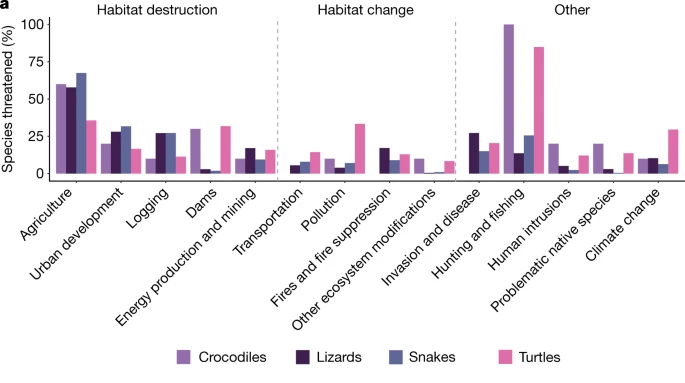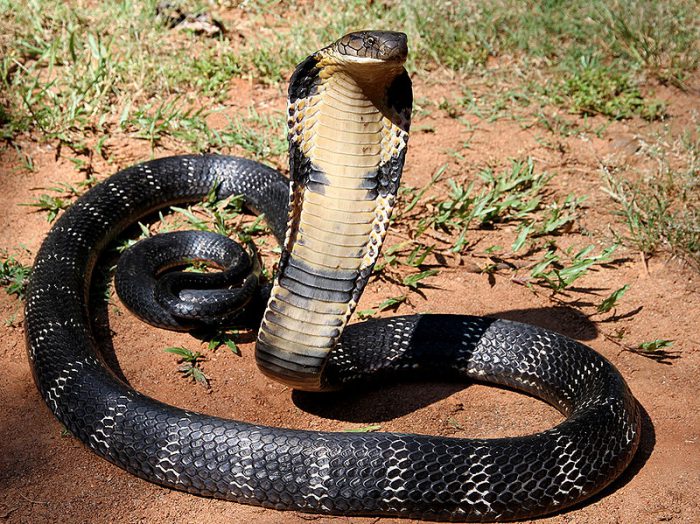One in five.
According to a newly released study, that is the number of reptile species that are either considered vulnerable, endangered, or critically endangered by extinction.
In one of the largest ever studies of reptiles, researchers looked at a total of 10,196 different species. They found that at least 1,829 were at risk. That works out to about 21 percent, or 1 in every 5 species.
A variety of threats

This chart shows the different threats faced by certain reptiles. You can see how crocodiles and turtles face far more hunting and fishing. (Neil Cox, Bruce Young, et al, Nature 2022)
There are many reasons why these animals are under threat. Some of it is habitat loss due to human development—such as building cities or deforestation (removing trees)—or pollution. Others are suffering because their unique biome (their favoured place to live) is disappearing due to climate change.
But some of the greatest threats are due to what the study's co-author Neil Cox calls "over-exploitation and persecution."
Crocodilian (57.9 percent) and turtle (50 percent) species are the most at risk in the reptile world. These types of animals are often hunted or captured because they are either seen as threats, as food, as pets, or for use in traditional medicine. In these cases, specific reptiles are being targeted in ways that are unsustainable.
Without changes, many will go extinct.
Sounding an alarm

King Cobras are one of the snakes that are at risk. (Wikimedia Commons)
This is why this study is so important—it is there to sound an alarm about species that are still often viewed as scary or not as important as birds or mammals. For example, one of the many at-risk reptiles—the king cobra—is still killed often by humans out of fear. But without action, it may not be around for much longer.
In fact, this study took over 15 years to complete because it was so hard for researchers to get the funding (money) needed to complete it. Meanwhile, similar studies on mammals, birds, and amphibians had been completed years ago.
Comparing species

'Cuter' animals—like these giant pandas—have often received more support and protection than reptiles. (Wikimedia Commons)
So with the studies complete, how to reptiles compare overall with other land vertebrates (animals with backbones)?
According to the data, "40.7% of amphibians, 25.4% of mammals and 13.6% of birds (species) are threatened with extinction." So by percentage, the number of reptile species at risk are a bit lower than other animal groups.
But by the total number of actual species at risk, reptiles are some of the most endangered animals in the world. This because there are almost as many reptiles species on Earth as amphibian and mammal species combined.
In need of proper help
In short, these animals all need improved conservation efforts. And they need solutions that are tailored to them, and where and how they live. Not where and how mammals or amphibians live.
As the study says, "reptiles are unusually diverse in arid (dry) regions, suggesting that they may have different conservation needs [than other animals]."
"There's just been a lot more focus on some of the more furry or feathery species of vertebrates for conservation," said another of the study's co-authors, zoologist Bruce Young. He, and everyone else behind the study, hopes that this information will help change that.
Because as these examples prove, when humans get together, conservation efforts can work!
 Crocodlies and their relatives are some of the most at risk reptiles on the planet. (ID 22469177 © Edwardje | Dreamstime.com)
Crocodlies and their relatives are some of the most at risk reptiles on the planet. (ID 22469177 © Edwardje | Dreamstime.com)









